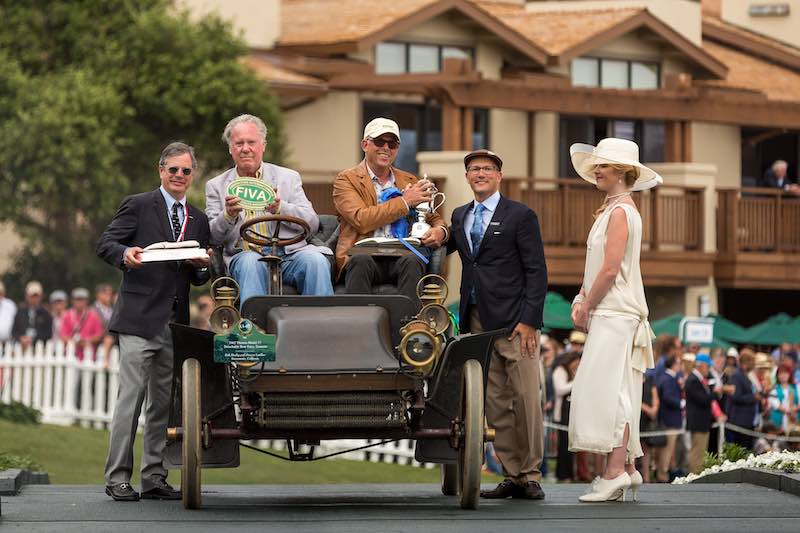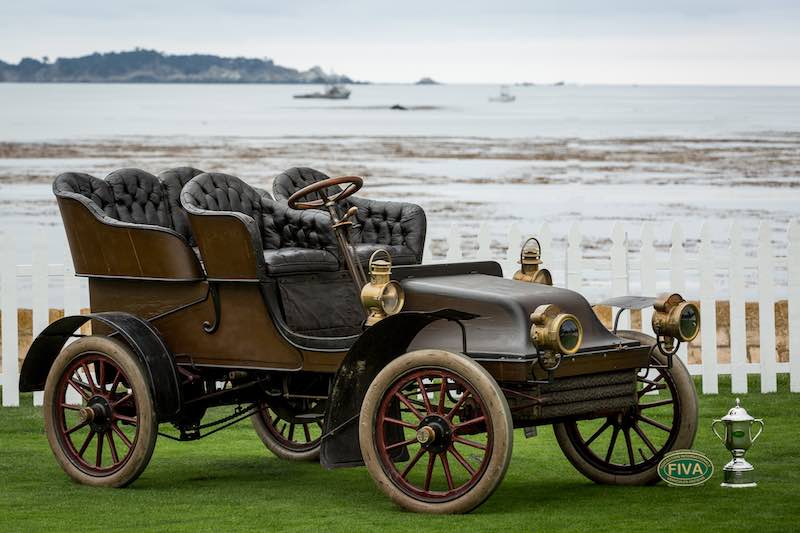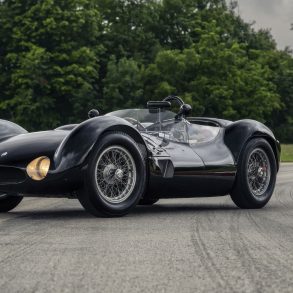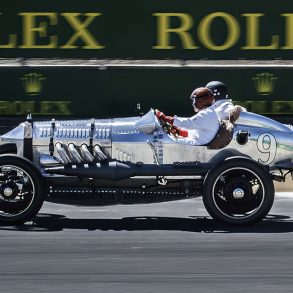At the Pebble Beach Concours d’Elegance on Sunday 21 August 2016, FIVA (the Fédération Internationale des Véhicules Anciens) awarded its preservation trophy to the 1902 Thomas, Model No. 17, owned by Kirk Bewley of Sacramento, California and Stewart Laidlaw of Redding, Connecticut.
The FIVA preservation award recognises vehicles that retain much of their original components, materials and finishes and as such are important cultural artefacts. The 2016 awards are part of the FIVA World Motoring Heritage Year celebration under the patronage of UNESCO.
In 1902, E. R. Thomas Motor Company acquired the assets of the Buffalo Automobile and Auto-Bi Company and began producing the single-cylinder, 8 h.p. Thomas, Model No. 17. The following year, the company introduced the much more powerful three-cylinder 24 h.p. Model No. 18 and eventually became well known for creating durable and powerful automobiles. The company received international fame when an American team won the 1908 New York to Paris race in a 1907 Thomas Flyer. The company went on to produce automobiles until 1919.
“This 1902 Thomas is believed to be the oldest complete Thomas motor car known to exist,” said co-owner Stewart Laidlaw. “Several years ago, it was purchased from the Wells Museum collection in Maine, which had owned it for more than 60 years.” While the precise history is not known, the car is thought to have resided in Maine from new, with only one owner prior to Mr Wells.
Stewart Laidlaw has collected and sold early brass era cars for more than 50 years. “I have a total affection for original cars,” he said. “This car is the best original early car I’ve ever seen.” Over the last decade, Mr Laidlaw’s cars have won the pre-War preservation class at the Pebble Beach Concours d’Elegance a record five times. Co-owner Kirk Bewley is a longtime friend and both men are members of the Horseless Carriage Club of America.

Speaking about the 1902 Thomas, Mr Laidlaw remarked, “When we received the car we removed varnish on the fenders to uncover the original japan (black paint). An amazing feature is the leather straps in the rear seats which are still intact and typically never survive. The wood body retains its original green/grey paint, a colour known as London Smoke, with gold leaf pin-striping. The pin-striping on the springs is interesting because of the repeated ‘T’ outline pattern for Thomas.”
When explaining how a car this old could be so beautifully preserved, Mr Laidlaw said, “Wealthy owners sent new cars to their summer homes in Maine. The cars would be used only a few months a year and would typically be well cared for in carriage houses in the off-season. During this early part of the century, the technology was changing fast and these owners would purchase new cars and keep the older models. This is likely what happened in the case of this Thomas.”
When presenting the award, Mark Gessler, Vice President of FIVA and President of HVA (the sole representative for FIVA in the United States and Canada), commented, “Eighteen years ago, in 1998, the first FIVA Preservation Trophy was established at the Pebble Beach Concours d’Elegance to help ensure that stewardship of unrestored vehicles was widely celebrated and strongly encouraged. This wonderfully preserved early Thomas motor car is an incredible example of over 100 years of careful stewardship.”
Patrick Rollet, President of FIVA, concluded, “In the year that FIVA is celebrating its 50th anniversary, we are delighted to be able to recognise one of the earliest automobiles at the Pebble Beach Concours d’Elegance, as part of FIVA’s World Motoring Heritage Year under the patronage of UNESCO.”
[Source: FIVA]










